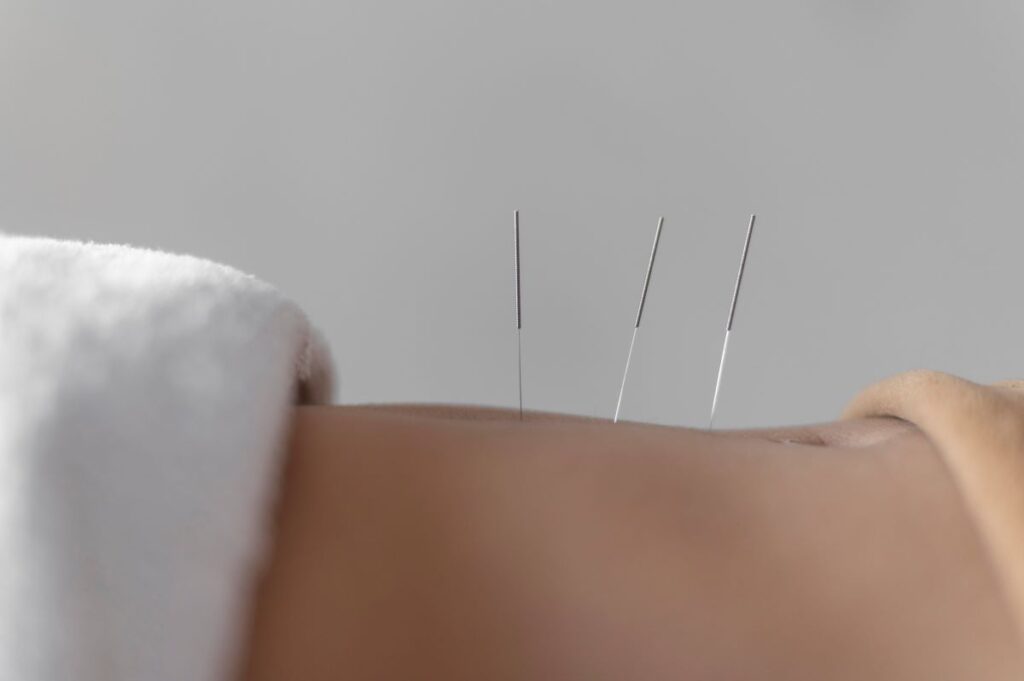Reiki and Acupuncture

By Rebecca Jaspan MPH, RD, CDN, CDCES
Oftentimes, the practitioner specializing in eating disorders (EDO) needs to get creative to help clients diagnosed with EDO engage the parasympathetic nervous system to then create new neuropathways associated with positive sensations and healthy self-care behaviors. Learning to activate the PSN will enable the individual to feel a greater sense of calm and experience less stress at meal times. Neuroplasticity allows this individual to create a new experience of eating and even body image. As discussed in Part 2 of 4, one way to engage the parasympathetic nervous system during a meal is through breathing exercises or a body scan. When breathing exercises aren’t working effectively or the client is unable to control their breathing, there are other avenues that can be tried in conjunction with the standard treatment for EDOs. Two such avenues are the complementary modalities, acupuncture and reiki.
Acupuncture, a key component of traditional Chinese medicine uses very tiny needles which are inserted into the skin at strategic points your body. Traditional Chinese medicine explains acupuncture as a technique for balancing the flow of energy, known as chi, through pathways called meridians. By inserting needles at specific points along these meridians, acupuncture practitioners believe that your energy flow can be re-balanced. These specific points stimulate nerves, muscles, and connective tissues that are thought to boost your body’s natural painkillers. Acupuncture is commonly used to treat pain and is used for overall wellness and stress management.
There is also a link between acupuncture and the chakra system, which plays a key role in Ayurvedic medicine and yoga. The chakras are the seven life-force energy centers of the body that are thought to receive, transmit, and assimilate energy. They are aligned vertically from the base of the spine to the top of the head. The chakras correlate with the meridians, or energy channels, that are used to balance the energy flow in acupuncture.
There is an abundance of studies with clear associations for acupuncture and depression, anxiety, insomnia, and even headaches1. One meta-analysis showed significant evidence to support the use of acupuncture for women with major depressive disorder2. Since about one-third of people with eating disorders are also diagnosed with depression, acupuncture may be a useful adjunct to therapy to help with negative shifts in mood and decrease anxiety often felt when individuals are stuck in a cycle of only activating their sympathetic nervous system.
In one small study, 9 women enrolled in an eating disorder treatment center consented to participate in either treatment as usual group or treatment supplemented by acupuncture. The study showed evidence for improved Quality of Life scores measured by physical, cognitive, and psychological components of the Eating Disorder Quality of Life scale and there was also evidence that acupuncture resulted in decreased anxiety and perfectionism. While more research is needed, there is evidence for the potential benefit of acupuncture as a complementary treatment of eating disorders1.
Additionally, reiki is a complementary modality that works with the energy fields around the body to transfer universal energy into the client. The word “reiki” derives from Japanese meaning “mysterious atmosphere, miraculous sign”. Reiki is shown to help treat heart disease, anxiety, depression, and chronic pain. Also referred to as healing or therapeutic touch, reiki can help the client move toward a relationship of trust, physical, psychological, and emotional relaxation that may improve the therapeutic alliance3. Using reiki to feel more emotionally at ease and grounded, the individual with an eating disorder may be more receptive to evidenced based eating disorder treatment.
Acupuncture and reiki help one experience their body in a new way that may contribute to forming new neuropathways and allowing meal times to feel less traumatic. By using these modalities to decrease stress and anxiety, it can be possible to feel more relaxed and grounded, thus changing the internal experience of food and body. Be sure to find a practitioner that works with eating disorders and the Health at Every Size approach. Your LCWNS dietitian can provide referrals to both reiki and or acupuncture providers we trust. Being open to trying something different, may help ease the process of eating disorder recovery.
- Fogarty S, Harris D, Zaslawski C, McAinch AJ, Stojanovska L. Acupuncture as an adjunct therapy in the treatment of eating disorders: a randomised cross-over pilot study. Complement Ther Med. 2010;18(6):233-240. doi:10.1016/j.ctim.2010.09.006
- Sniezek DP, Siddiqui IJ. Acupuncture for Treating Anxiety and Depression in Women: A Clinical Systematic Review. Med Acupunct. 2013;25(3):164-172. doi:10.1089/acu.2012.0900
- Satori N. Toucher thérapeutique et anorexie mentale [Therapeutic touch and anorexia nervosa]. Soins Psychiatr. 2016;37(306):12-16. doi:10.1016/j.spsy.2016.07.002







